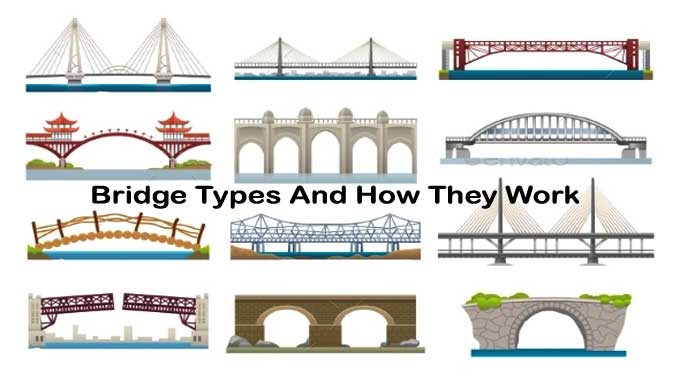
Different Classification and Types of Bridges
There is a whole field of engineering involved in designing bridges when you look at how they work. Modern bridges often incorporate what many of us perceive as aesthetic features as part of their design. They often serve to reduce tension and stress in various ways. Different bridge designs seem to be more appropriate for different terrains as well. It speaks volumes about the viability, durability, and safety of these designs that they have been around for centuries.
Types of Bridges
Arch Bridges
Arch bridges come in many different types, but they all share certain characteristics. Under every bridge, some abutments support the curved arch structure. Viaducts are long bridge with many arches, the most common type of arch bridge. An arch's span creates lateral pressure on its supporting abutments.
Therefore, these parts of the bridge must remain solid, intact, and well-supported. Many of the arches have decorative brickwork that is integral to their design. An arch bridge is so simple yet incredibly effective that it can carry anything from pedestrians to heavy rails.
Truss Bridges
Truss bridges have been around for literally centuries. These are a way to build a load-bearing structure with a truss that's simple and highly efficient.
The simple truss bridge is available in several variations, but they all incorporate triangular sections. These triangular elements create a stressed structure that can effectively absorb tension and compression to accommodate dynamic loads. As a result of this tension and compression mixture, the bridge structure and decking area remain un-damage in relatively strong winds
Cable-Stayed Bridges
Cable-Stayed bridges may look simple, but their structure is extremely effective. The suspension bridge deck carries the structure's weight. Vertical suspenders tie the cables to the deck. A suspension cable extends out from each side of the bridge and is firmly embedded in the ground.
The number of towers required to support the suspension cables will depend on the size of the bridge. As a result of the tension on its suspension cables, the bridge is subject to tension. A slight movement of the suspension cables can occur in challenging weather conditions due to some give in the cables.
Beam Bridges
There are many types of bridges, but a beam bridge is among the simplest. For example, if you go on a walk in the country, you may see a basic log bridge. Wood planks or stone slabs traditionally make up the deck area.
Each of these beams is supported by an abutment or pier. Between the main beams, you will often find other beams that provide additional support and stability. A simple deck will position vertically over the beams to provide a surface on which people and vehicles can travel. In contrast to arch structures and other types of bridges, there is no transfer of stress.
Rigid Frame Bridges
A rigid frame bridge is one whose piers and girders are integral parts. I-shaped or box-shaped cross-section is typical for beams in rigid frame bridges. Bridges with rigid frames require more complex calculations than those with simple girders. Building an accurate and detailed junction between a pier and a girder can be challenging.
Types of Rigid Frame Bridges
The pi-shaped frame, the batter post-frame, and the V-shaped frame are almost exclusively used these days. The batter post rigid frame bridge is a good choice for river crossings and valley crossings. Therefore, its piers can incline to span the crossing without the need for deep foundations in the middle of rivers or deep valleys.
Frames with V-shapes make effective use of foundations. A V-shaped pier provides two support points for the girder, which reduces the number of foundations and makes the building's profile less cluttered.
As piers and supports for inner-city highways, pi-shaped rigid frame structures use. Bridges like these have a frame that supports the raised highway while simultaneously allowing traffic to pass directly under them.
Wrapping it Up
The longevity of bridge designs and the fact that they have been around for centuries make them interesting to consider. Even the greatest engineers have not been able to improve the basic load-bearing designs of the past. Deck areas may be load-bearing elements in some cases, while towers may be. Other designers use bridge cables to transmit tension, allowing them to be flexible at different elevations.
To get more details, watch the following video tutorial.
Video Source: Civil Notebook


